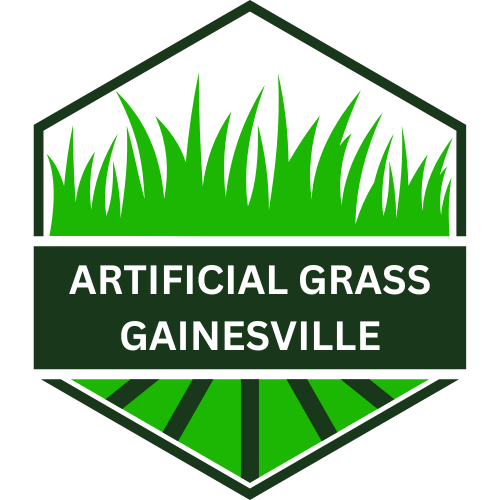Whether you’re upgrading your outdoor space or replacing worn-out turf, Artificial Grass Gainesville assures that removing artificial turf can seem like a daunting task.
Generally speaking, removing artificial turf involves carefully cutting and lifting the turf, cleaning and repairing the underlying surface, and properly disposing of or recycling the old material. With the right tools and techniques, you can complete the process efficiently and prepare your area for its next use.
With the right approach and tools, you can tackle the job efficiently and get your space ready for a fresh start.
1. Preparing for Removal
1.1 Gathering Necessary Tools
Before you dive into the removal process, gather the essential tools you’ll need: a utility knife, pry bar, gloves, and possibly a hammer or pliers. Choosing the right equipment makes the job easier and safer, so invest in quality tools that suit your needs.
1.2 Assessing the Area
Take a good look at the area where the turf is installed. Check for any loose sections, seams, or adhesive residues. Understanding the layout and condition of your turf helps you plan the removal process more effectively and identify any potential issues.
2. Removing the Turf
2.1 Cutting the Turf
Start by cutting the turf into manageable sections. Use a utility knife to make clean cuts along the seams or edges. Cutting the turf into smaller pieces makes it easier to handle and remove. Be cautious around any fasteners or glue to avoid damaging the underlying surface.
2.2 Lifting and Removing Turf
Once you’ve cut the turf, use a pry bar to lift and peel away the sections. Work carefully to avoid tearing or stretching the turf. If the turf is glued down, you may need to use a scraper to remove any leftover adhesive. Take your time to ensure you get every piece without leaving a mess.
3. Handling the Underlying Surface
3.1 Cleaning the Surface
With the turf removed, you’ll likely find debris, adhesive residues, or other materials on the underlying surface. Clean the area thoroughly using a broom, vacuum, or pressure washer. Removing all traces of the old turf ensures a smooth and clean surface for any new installation or repairs.
3.2 Repairing Any Damage
Inspect the surface for any damage, such as cracks or uneven areas. Repair any issues using appropriate materials, like concrete filler or patching compounds. A well-prepared surface is crucial for the longevity and appearance of your new project, whether it’s new turf or another type of flooring.
4. Disposal and Recycling
4.1 Disposing of Turf Material
Proper disposal of artificial turf is important for environmental reasons. Follow local regulations for waste disposal, and consider options like landfill disposal or donation if the turf is still in good condition. Check with local waste management facilities for specific guidelines.
4.2 Recycling and Repurposing
Look into recycling programs or companies that accept used artificial turf. Many facilities can recycle the turf into new products, reducing environmental impact. If recycling isn’t an option, think about creative ways to repurpose the turf, like using it for craft projects or as protective coverings.
5. Post-Removal Steps
5.1 Inspecting the Area
After you’ve removed the turf and cleaned the surface, perform a final inspection. Ensure there’s no debris left and that the surface is fully prepared for its next use. This step is crucial to avoid complications with future installations or landscaping.
5.2 Preparing for New Projects
Now that the area is clear, you can start planning your next project. Whether you’re installing new turf or taking a different approach, use the clean slate to your advantage. Consider factors like drainage, aesthetics, and functionality to make the most of your newly cleared space.
Removing artificial turf doesn’t have to be a hassle. By following these steps, you’ll efficiently clear your area and prepare it for whatever comes next. With a little patience and the right tools, you can transform your outdoor space with ease.
FAQ
How long does it typically take to remove artificial turf?
The time required to remove artificial turf varies depending on the size of the area and the complexity of the installation. On average, you might spend a few hours to a full day on the task. Larger or more intricate installations may take longer, so plan accordingly.
What should I do if the adhesive is particularly difficult to remove?
If the adhesive is stubborn and difficult to remove, you may need to use a solvent designed for turf adhesives or a stronger adhesive remover. Apply the solvent according to the manufacturer’s instructions and allow it to sit for a while before scraping. For very tough residues, you might need to use a combination of solvents and mechanical scrapers.
Can I remove artificial turf myself, or should I hire a professional?
Removing artificial turf can be a DIY project if you have the right tools and are comfortable with basic manual labor. However, if the installation is complex, the adhesive is particularly challenging, or you prefer a hassle-free process, hiring a professional can ensure the job is done efficiently and safely.
What do I do with the old turf after removal?
After removing the turf, check local regulations for disposal options. Many areas have specific guidelines for disposing of synthetic materials. Consider recycling if available, or donate the turf if it’s still in good condition. Recycling programs can help reduce environmental impact.
How can I prevent damage to the underlying surface during removal?
To avoid damaging the underlying surface, use appropriate tools and techniques for cutting and lifting the turf. Work slowly and carefully, especially around seams and edges. If you encounter any issues, such as strong adhesive bonds, address them gently to avoid causing harm to the surface beneath.
